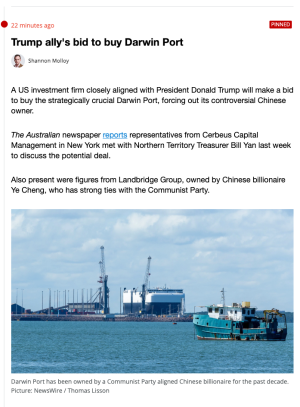I thought I might do a quick post on how the Australian Government invests into rare earth mines/projects. This analysis only goes back 4-5 years. But it also highlights the different Govt agencies, their roles and how they work together (in theory).  . NOTE: It does not cover the State or Local council assistance that is provided. That might be a new post.
. NOTE: It does not cover the State or Local council assistance that is provided. That might be a new post.
Over the past five years, the Australian federal government has actively supported companies in the rare earths sector – especially those producing neodymium-praseodymium (NdPr) for high-strength magnets – through grants, loans and strategic investments. Notable examples include:
Numerous other critical minerals projects – e.g. vanadium, graphite, battery materials – have likewise received federal support in this period. In total, the government’s commitments to rare earth and critical mineral firms have expanded significantly, aimed at breaking China’s supply dominance and developing an ex-China supply chain.
Examples of Federal Support for Rare Earth Companies (NdPr Focus)
Over the past five years, the Australian federal government has actively supported companies in the rare earths sector – especially those producing neodymium-praseodymium (NdPr) for high-strength magnets – through grants, loans and strategic investments. Notable examples include:
- Lynas Rare Earths – Received an A$14.8 million grant (July 2021) under the Modern Manufacturing Initiative (Department of Industry) to commercialise a new refining process for high-purity rare earth carbonate at its Kalgoorlie processing plant. This grant covers about half the cost of implementing the new refining process and helps Lynas expand downstream processing in Australia.
- Iluka Resources – Secured a A$1.25 billion federal loan (April 2022) through the government’s Critical Minerals Facility (administered by Export Finance Australia) to establish the Eneabba Rare Earths Refinery in Western Australia. This refinery – Australia’s first fully integrated rare earth separation plant – will produce Nd, Pr, Dy and Tb oxides for use in EVs, wind turbines, and electronics. In December 2024, an additional A$400 million loan was approved to cover cost overruns, bringing total government loan support for Iluka’s project to A$1.65 billion.
- Hastings Technology Metals – Obtained a Northern Australia Infrastructure Facility (NAIF) loan of A$140 million (Feb 2022), later increased by A$80 million to A$220 million (Jan 2023), to finance its Yangibana rare earth mine and processing plants in WA. This funding (approved by the NAIF board and federal minister) supports construction of the NdPr-rich Yangibana project, which will deliver mixed rare earth carbonate and is expected to supply ~6–8% of global NdPr demand.
- Arafura Rare Earths – Backed by a combined government financing package of up to A$840 million (announced March 2024) to develop the Nolans NdPr mine and refinery in the Northern Territory. This includes debt funding from Export Finance Australia and NAIF, covering roughly half of Nolans’ capital cost and enabling Australia’s first fully integrated rare earth mine/refinery. In addition, the National Reconstruction Fund Corporation (NRF) made a $200 million cornerstone investment in Arafura (Jan 2025) to help the company secure remaining finance for Nolans. Nolans is slated to supply about 4% of world NdPr demand by 2032.
- Australian Rare Earths Ltd – Awarded a A$5 million grant (Dec 2024) under the International Partnerships in Critical Minerals program to build a demonstration plant for extraction of rare earth elements (including NdPr) from its Koppamurra ionic clay project in South Australia. This grant supports feasibility work on novel rare earth sources and involves collaboration with international partners, highlighting Australia’s efforts to diversify global supply chains.
Numerous other critical minerals projects – e.g. vanadium, graphite, battery materials – have likewise received federal support in this period. In total, the government’s commitments to rare earth and critical mineral firms have expanded significantly, aimed at breaking China’s supply dominance and developing an ex-China supply chain.
